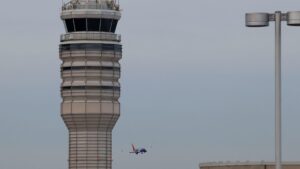Understanding the FAA’s New Restrictions on Helicopter Traffic Following the Tragic Collision in D.C.
At Extreme Investor Network, we strive to keep our readers informed about significant developments in the aviation industry—especially as safety and regulations evolve in the wake of tragic events. A recent incident involving an American Eagle jetliner and a U.S. Army Black Hawk helicopter near Ronald Reagan Washington National Airport has spurred immediate regulatory changes designed to ensure the safety of air traffic in the densely populated area of Washington, D.C.
A Tragedy in the Skies
On January 30, 2025, a catastrophic collision occurred just moments before American Eagle Flight 5342 was scheduled to land at Reagan National Airport. The regional CRJ700 airplane, arriving from Wichita, Kansas, was struck by a transitioning Army Black Hawk helicopter, resulting in the loss of 67 lives—64 passengers and crew aboard the plane and all three on the helicopter. This incident marks the first deadly commercial airline crash in the U.S. in over 15 years and highlights the complex dynamics of air traffic management in urban environments.
Prompt Regulatory Action
In response to this incident, the Federal Aviation Administration (FAA) announced new restrictions on helicopter traffic around Reagan National. Transportation Secretary Sean Duffy emphasized the necessity of these measures, stating, "Today’s decision will immediately help secure the airspace near Reagan Airport, ensuring the safety of airplane and helicopter traffic." The restricted flight zones will span from Memorial Bridge to South Capitol Street Bridge, from Haines Point to Wilson Bridge, and directly above the airport itself.
These restrictions aim to prevent future tragedies and restore public trust in U.S. air travel, particularly in busy airspaces that accommodate various aircraft types.
Helicopter Operations: The Need for More Safety
The National Transportation Safety Board (NTSB) has indicated that helicopters operating over D.C. adhere to defined zones, which helps manage the complex air traffic interplay. NTSB member Todd Inman noted, "This one was transitioning from track one to four as part of their normal procedure." Given the volume of helicopter traffic in Washington, especially near military installations and the Pentagon, the need for strict adherence to operational protocols is critical.
American Airlines’ CEO, Robert Isom, pointed out the uncertainty surrounding how the military helicopter ended up in the flight path of a commercial aircraft. The FAA currently mandates that helicopters operating near the airport must maintain a maximum altitude of 200 feet, a rule now under scrutiny as investigators examine flight operations, altitude, staffing, and air traffic control communication protocols.
Moving Forward: What This Means for Airlines and Passengers
As the investigation unfolds, the FAA’s swift response reflects a proactive approach to aviation safety, ensuring that air travel not only remains efficient but also prioritizes the well-being of passengers and crews alike. For those in the aviation industry and for frequent travelers, understanding these changes is vital.
At Extreme Investor Network, we encourage our readers to stay informed about how these regulations could impact air traffic, especially in regions with high helicopter activity. Safety reforms often ripple through the industry, affecting flight schedules, operational costs, and ultimately, passenger experiences.
Conclusion
The recent tragedy serves as a stark reminder of the complexities of managing air traffic in urban areas. The FAA’s commitment to revising helicopter traffic regulations around Reagan National Airport is a critical step toward enhancing aviation safety. As investigations continue, the aviation community, as well as travelers, will be watching closely to understand how these changes will reshape flight operations and bolster public confidence in air travel.
For further updates and insights into aviation safety and regulations, stay tuned to Extreme Investor Network, where we prioritize keeping our readers ahead of the curve on important industry news.

